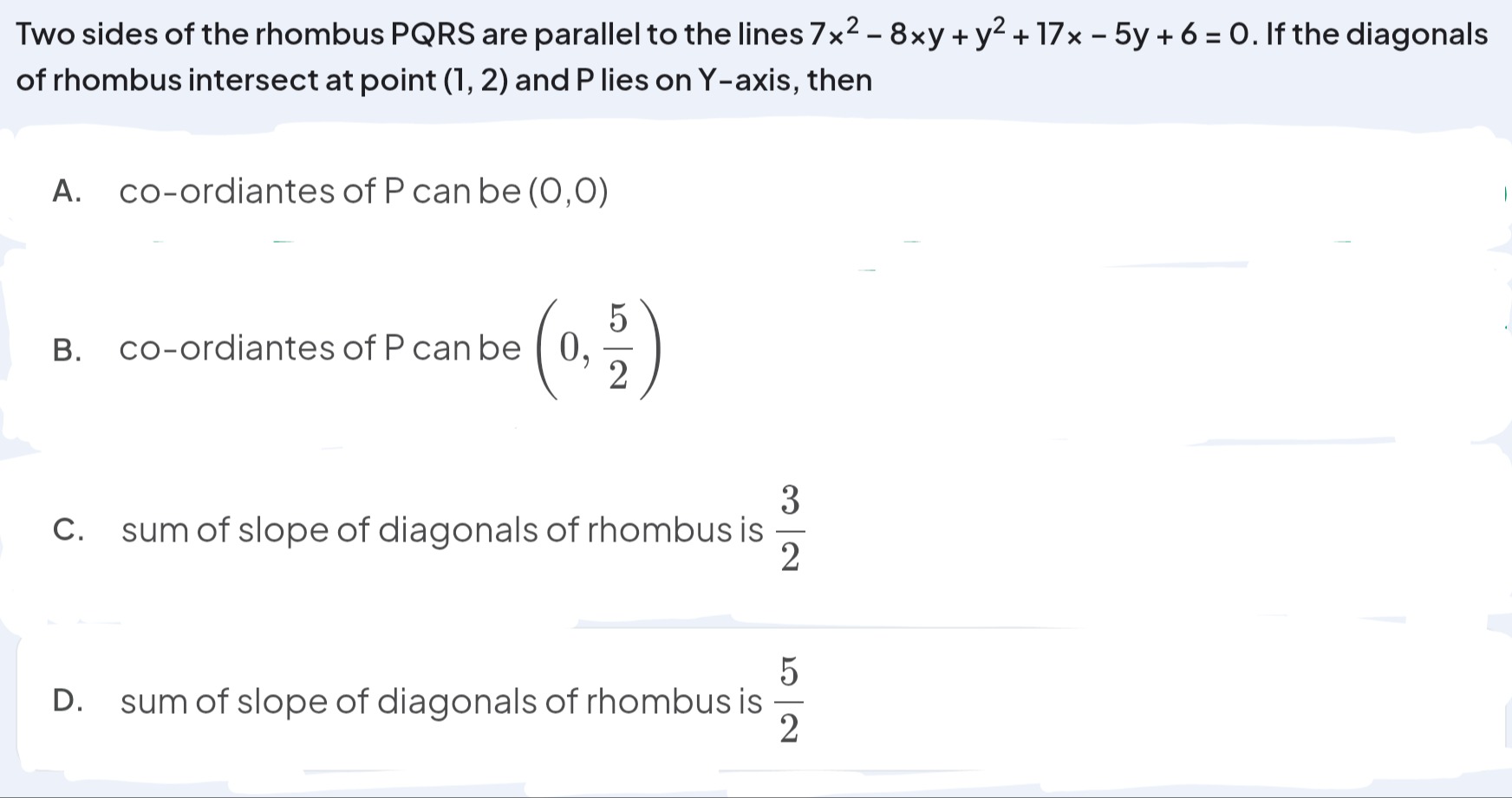Question
Question: Two sides of the rhombus PQRS are parallel to the lines $7x^2 - 8xy + y^2 + 17x - 5y + 6 = 0$. If th...
Two sides of the rhombus PQRS are parallel to the lines 7x2−8xy+y2+17x−5y+6=0. If the diagonals of rhombus intersect at point (1, 2) and P lies on Y-axis, then

co-ordiantes of P can be (0,0)
co-ordiantes of P can be (0,25)
sum of slope of diagonals of rhombus is 23
sum of slope of diagonals of rhombus is 25
A, B, C
Solution
The given equation 7x2−8xy+y2+17x−5y+6=0 factors into two lines. The quadratic part 7x2−8xy+y2 can be factored as (y−x)(y−7x). Thus, the lines are y=x and y=7x. The slopes of these lines are m1=1 and m2=7. These are the slopes of the adjacent sides of the rhombus.
The diagonals of a rhombus are the angle bisectors of the sides. The angle bisectors of y−x=0 and y−7x=0 are found using the formula: 12+(−1)2x−y=±72+(−1)27x−y 2x−y=±507x−y=±527x−y 5(x−y)=±(7x−y)
Case 1: 5x−5y=7x−y⟹2x+4y=0⟹y=−21x. The slope is md1=−21. Case 2: 5x−5y=−(7x−y)⟹5x−5y=−7x+y⟹12x−6y=0⟹y=2x. The slope is md2=2.
The slopes of the diagonals are 2 and −21. The sum of the slopes is 2+(−21)=23. This confirms option C.
The diagonals intersect at (1, 2). The equations of the diagonals are: Diagonal 1 (slope 2): y−2=2(x−1)⟹y=2x. Diagonal 2 (slope −21): y−2=−21(x−1)⟹2y−4=−x+1⟹x+2y−5=0.
Vertex P lies on the Y-axis, so its coordinates are (0,yP). P must lie on one of the diagonals. If P lies on y=2x: yP=2(0)⟹yP=0. So P can be (0,0). This confirms option A. If P lies on x+2y−5=0: 0+2yP−5=0⟹2yP=5⟹yP=25. So P can be (0,25). This confirms option B.
